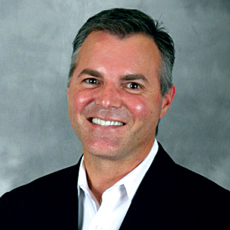
It’s no secret: With the now greater prevalence of bundled payments, hospitals are looking to PAC providers to help lower costs by shortening a patient’s length of stay (LOS).
For facilities that are involved in bundled payments, the days of keeping a patient until they are clinically stable before discharging to home are over. Now, LOS after a hip or knee replacement can be around six to eight days in a skilled nursing facility. After that, a patient is moved back to their home with the assistance of home health.
LOS is obviously something that all hospitals in the bundled payment plans are looking to lower because it’s going to enhance their bottom line if they can put the patient in the most cost-effective healthcare setting to gain the results they’re looking for. However, this has put a major drag on SNF census as they watch their patient days drop. SNFs now have to work twice as hard to take more patients at shorter stays to meet their bottom line.
So how does a SNF work with the hospital to find the ideal LOS for each particular patient’s needs?
I believe one answer is real dialogue about case management.
One way that successful SNF operators are combatting the lowering LOS is by opening a better line of communication with referring hospitals. They’re using more data points and better patient assessment to show that those who have more co-morbidities can benefit from having more skilled nursing days, or a longer LOS.
Once a SNF has these data points, they should open a dialogue about them. Hospitals have different facilities, protocols and standards as compared to a SNF. It may all sound like the same language, but because of differing focus from hospital to SNF, you could be talking a lot and yet still not communicating. Standardized forms can go a long way toward aiding the dialogue, but nothing is going to replace active communication.
Because here’s the thing: The more you know about the patient and what they’re doing, the better equipped you are to demonstrate that they might benefit from a longer length of stay. If you can clearly communicate that, you can agree to elongate the LOS. Don’t get me wrong, I’m not talking about gaming the system to combat a stuttering census. If hospitals find you’re unnecessarily driving up costs, they’re not going to want you on their team. I’m talking about finding the right LOS to best benefit the patient. We need to be looking at each individual patient and dialoging with the hospital to figure out the right LOS for that individual.
LOS is a tricky subject. With all these changes, there’s not a lot of data or proof yet. We’re working off more conjecture at this point than information. But the initial results that I hear from PAC providers around the country is that LOS cannot be a determined by a formula from someone in Connecticut based off data from California to tell a provider in Massachusetts how long their patient should stay. Tools that exist in your SNFs and hospitals today—complete transfer forms, SBAR, a good EMR system, assessment tools that look at multiple comorbidities at once, evidence-based and diagnostic-driven disease care management systems—can foster a complete picture of what’s going on with each patient and help you and the hospital together determine the best LOS necessary for that patient’s best health.
After all, it is in your best interest and the hospital’s to ensure that each patient has the best opportunity for health and healing and avoid readmission. More than that, it is in the best interest of the patient. And isn’t that the overarching goal of all these healthcare mandates in the first place?
Shawn Scott is Medline‘s senior vice president of corporate sales. He has been active on the boards and committees of several organizations including the National Center for Assisted Living (NCAL), American Health Care Association (AHCA), Advancing Excellence in Long Term Care, and Nursing Home Leader Academy.




